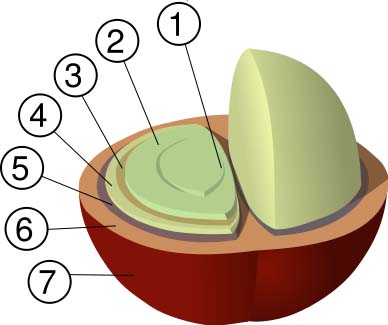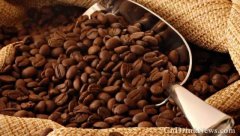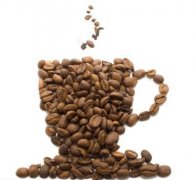The anatomy of coffee the internal structure of coffee beans.

1. Central line
2. Endosperm
3. Silver skin
4. Endocarp (parchment)
5. Gelatinous layer
6. Pulp
7. Outer skin
Important Notice :
前街咖啡 FrontStreet Coffee has moved to new addredd:
FrontStreet Coffee Address: 315,Donghua East Road,GuangZhou
Tel:020 38364473
- Prev

Coffee in the land of golden mythology and monsoon in India
"translated from FreshCup Magazine, April, pp. 64-70, India Goldby Kenneth Davids. The copyright of the original text and other related rights are owned by the magazine, and the copyright of the translated text is reserved by the translator. Please do not reprint or reset at will." Coffee in India's Golden ── Myth country and Monsoon Land our mysterious impression of India is not just its coffee.
- Next

The frozen storage of coffee seeds enables the seeds to be preserved well for a long time.
The French Development Institute has recently successfully invented a method of long-term frozen storage of small fruit coffee seeds, which provides a reliable means for establishing a small fruit coffee seed bank and protecting biodiversity. Coffee belongs to Rubiaceae evergreen shrubs or small trees, mainly produced in tropical areas, there are small fruit coffee, medium fruit coffee and large fruit coffee and so on. Small fruit coffee is native to the Arab region and is currently grown in the world.
Related
- Guji coffee producing area of Guji, Ethiopia: Humbela, Shakiso, Wulaga
- What is the most expensive variety of Qiloso in BOP multi-variety group?
- How to store the coffee beans bought home?
- Why are Yemeni coffee beans so rare now?
- Ethiopian Sidamo all Red Fruit Sun Sun Santa Vini Coffee beans
- SOE is mostly sour? What does it mean? Is it a single bean? what's the difference between it and Italian blending?
- Is Italian coffee beans suitable for making hand-brewed coffee?
- How to choose coffee beans when making cold coffee? What kind of coffee beans are suitable for making cold coffee?
- Just entered the pit to make coffee, what kind of coffee beans should be chosen?
- Can only Japan buy real Blue Mountain Coffee? What are authentic Jamaican Blue Mountain coffee beans?

